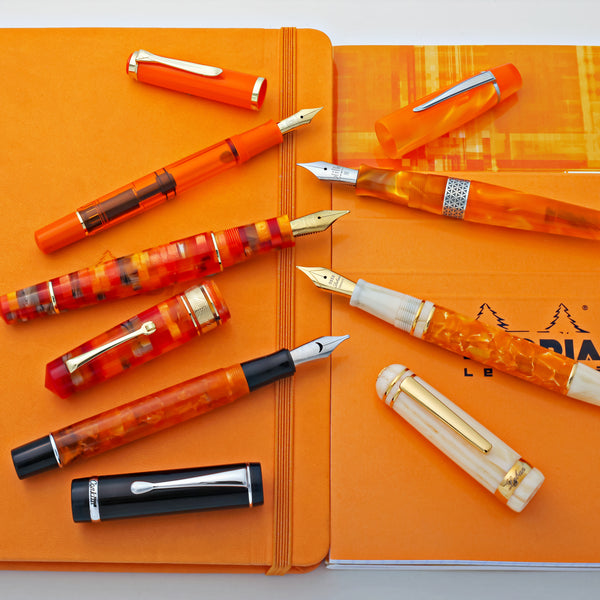Fountain Pens Demystified - Fine Pens for Beginners
This is the first installment of Goldspot Pens' beginner series on fine writing pens. Chances are, if you've stumbled across this post, you might have seen a fountain pen on the interwebs. Maybe a calligrapher, illustrator or artist was showing their analog writing skills in a video. If you're lucky enough, maybe you saw one in real life and it piqued your interest enough to seek out more information.
In any case, you've come to the "write" place.
What is a fountain pen?
Contrary to how the name sounds, a fountain pen does not expel pools of ink wherever it goes. Back when our ancestors used quill feathers and dip nib pens, people were limited to writing at their desk with a pot of ink close at hand, dipping frequently after every few words.
Could you imagine needing to recharge your phone everytime you send a text message? That's what writers used to do "back in the day."
Fountain pens were invented to hold a supply of ink inside the pen, providing an uninterrupted flow. Instead of a few words at a time, a writer could write pages with a fountain pen before needing a refill. The magic process at work is capillary action, taking ink from the inner reservoir and feeding it to the tip of the nib. A well-designed nib and feed provide ample ink flow for writing while preventing the pen from leaking, highlighting the fountain pen vs dip pen advantages.
Consider the advent of the ballpoint pen, the typewriter, word processor, home computer, and, more currently, mobile technology. These technological developments should have rendered the fountain pen obsolete, right?
Far from it.
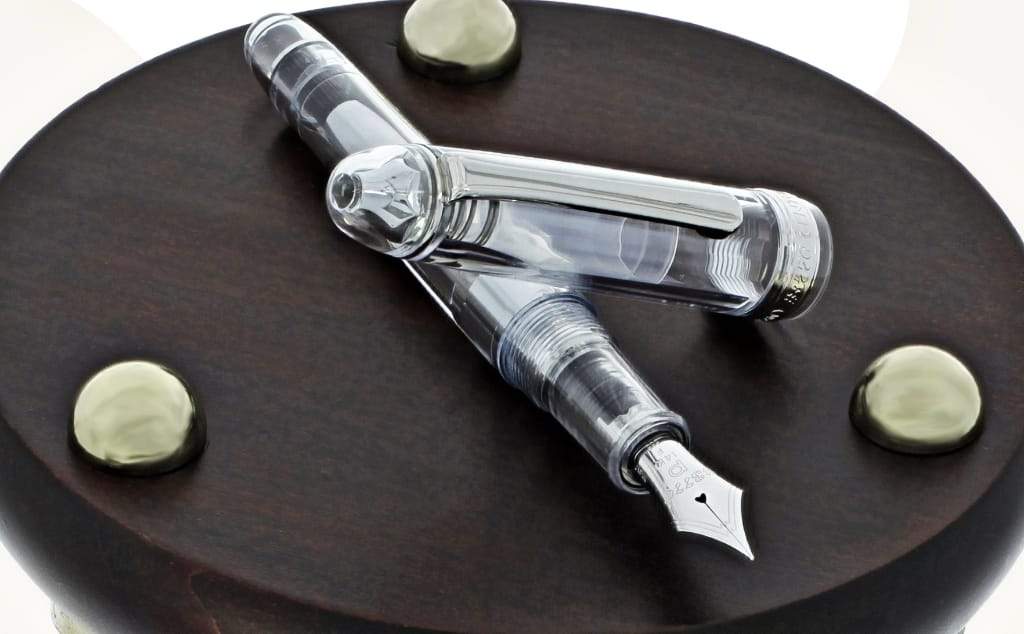
One would think that the 21st Century would have seen the end of fountain pens like the 19th Century brought the end of the quill feather dip pen. On the contrary, worldwide fountain pen sales are on the rise, a trend that, ironically, is partly due to an active online community consisting of pen enthusiasts, collectors, and creatives that share the passion for pens on social media. It is this exposure and easy access to knowledge that helps our current generation reconnect with writing in a way they might not experience in their everyday walks of life.
You might be asking yourself, "why are people fascinated with using fountain pens?"
#1 They aren't meant to be disposed of. When it comes to pens, most people settle on using whatever free pens they get from a bank, the cheap kind that get thrown away once the ink runs out. Fountain pens are meant to be refilled. Most quality pens are built to last a lifetime, if not longer.
#2 They provide a personal touch. Think of all the e-mails & texts you read every day, sterile of emotion and personability. A fountain pen communicates a lot more about a person than the words that are on the page. The variety of nib sizes and the vast selection of ink colors provide the writer with an unmatched level of individual written expression. Want to write with calligraphic flair in a color that matches your favorite pair of shoes? A fountain pen can do that!
#3 They are a status item - like it or not. A person writing with a fountain pen today makes a statement and draws attention in public. It's much more common for someone to pull out an $800 phone from their pocket to send a text than it is to pull an $800 fountain pen to jot down some notes. Much like a nice watch, showing off a nice pen gets attention from onlookers.
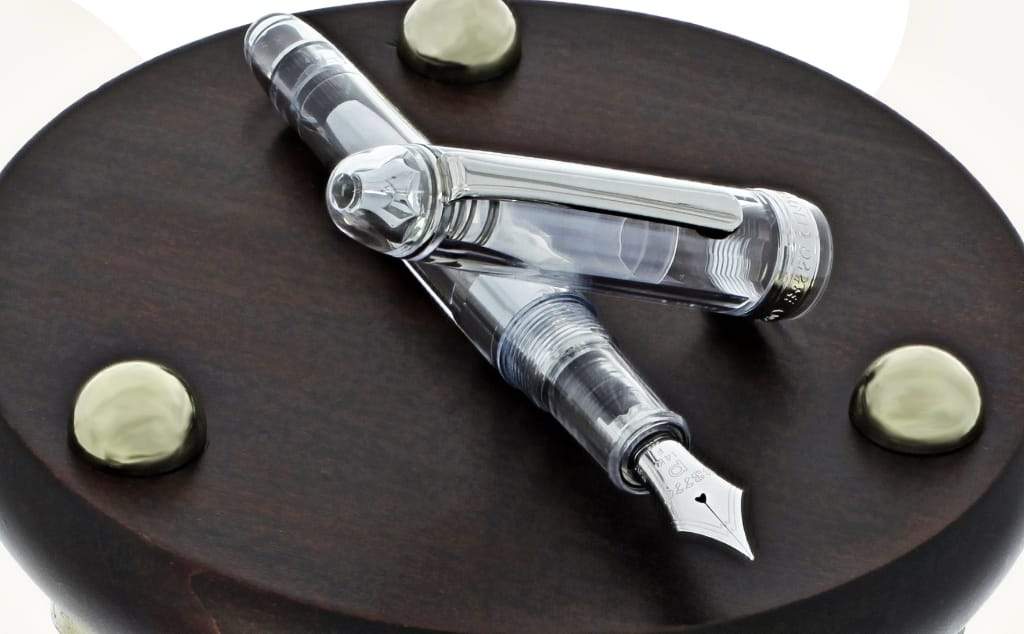
That being said, not all fountain pens are expensive status symbols of the bourgeois class. In fact, part of their recent resurgence is attributed to the development of excellent starter pen options that are affordable, nice to write with, and durable.
Want a great first-time experience with a fountain pen? Like I mentioned, you won't have to shell out a car payment just to get started. You can get writing for under $40 with the following pens:
Pilot Metropolitan, Lamy Safari, Faber-Castell Loom, Platinum Preppy, Pelikan Pelikano, Pilot Kakuno, and the Kaweco Sport.
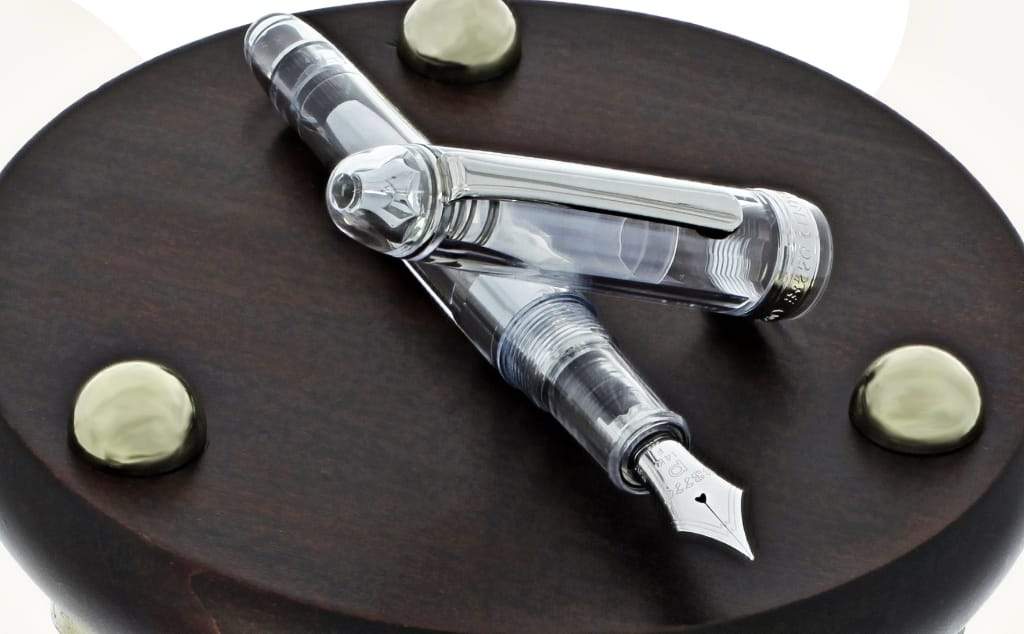
Your first time doesn't need to be expensive, nor messy. One of the big misconceptions people have about fountain pens is that they are spill disaster waiting to happen, primed to ruin every piece of clothing you own, as well as any carpet or rug in your home. Don't get me wrong, I'll occasionally have inky fingers from filling or cleaning a pen, but it has never caused a widespread disaster of my wardrobe. Most fountain pens are easier to fill than an inkjet printer. The easiest method is using an ink cartridge.
Maintenance shouldn't be much of a concern either. If you can manage to brush your teeth, take a shower, and keep a cactus alive, you can maintain a fountain pen. Most fountain pens use cartridge/converter filling systems, which are the least fussy to clean. Using a disposable ink cartridge is a simple, plug-and-play method to get your pen writing. Once the cartridge is spent, you can toss it and rinse the pen's section, nib, and feed under cool running tap water until it is clear. Let the nib air dry or blot it with a cloth. Then, you're golden to ink the pen again or put it away for safekeeping. My favorite option for fountain pen maintenance is keeping it safe in a fountain pen case.
If you keep your pen clean between inkings and you don't carelessly drop it on the nib or loan it to a klepto co-worker, you will have a writing instrument that will last you for life. If issues do arise in the future, most reputable pen manufacturers like Pilot, Sailor, Pelikan, Aurora, Parker, Waterman, Lamy, and Faber-Castell to name a few, uphold mechanical warranties should your pen experience a fountain pen not working scenario. Also, there are pen repair specialists and nib meisters that make a respectable living repairing, customizing, and restoring fountain pens. So, even in the event that your pen takes a swan dive off the desk resulting in a car wreck of a nib, you would be able to find someone to repair it and get it working again.
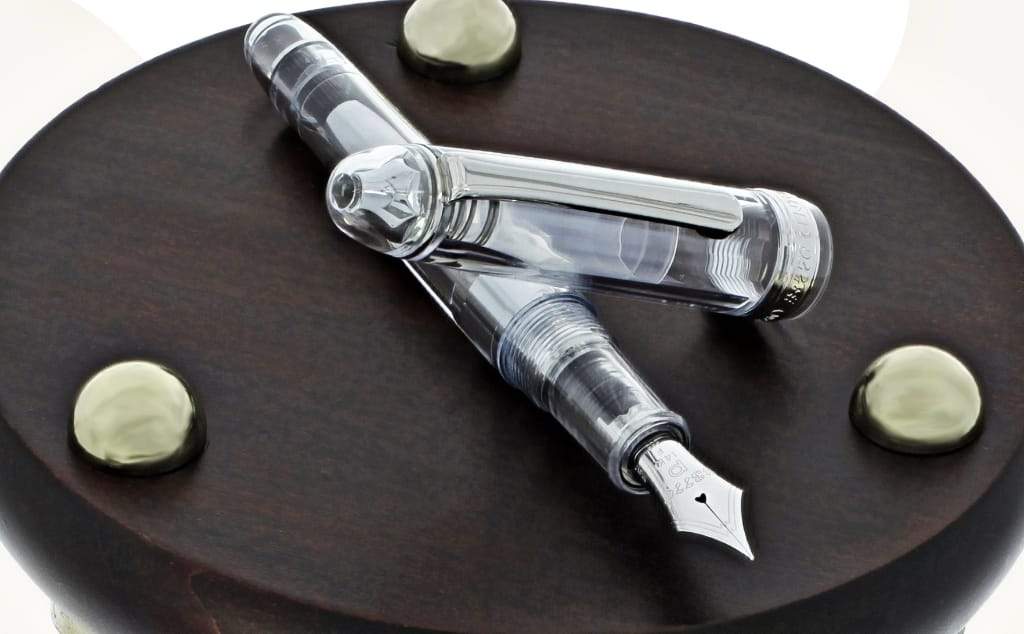
Let's talk "lifetime value." If you spend $50 on a pen that will last 20 years, which most last much longer than that, your lifetime cost of the pen is $2.50 per year. Buying the latest tech gadget may only last you 2 years before it is either broken, worn out or obsolete. By the time you are finished paying for your current $800 smartphone, you may already be in need to purchase a newer model. How does spending $400 a year on a rapidly depreciating piece of distracting mobile technology sound?
Believe it or not, some pens actually pay to buy them. Limited editions are a prime example. If they are well taken care of, you may end up breaking even or coming out ahead if you decide to sell it after a few years, especially if they are sought after as fountain pens for drawing.
For those who follow us and are self-professed fountain pen addicts, share your reasons why you enjoy writing with them in the comments below. If you are still hesitant or think fountain pens are still not for you, we'd also like to hear from you as well. What is holding you back? Maybe you haven't found the best starter fountain pen yet, which could change your perspective. Just don't be a troll - fountain pen enthusiasts are an intelligent, kind group that will ignore your attempts to bait them. Maybe it's because we tend to keep our thoughts confined to journal pages rather than littering discussion threads with inflammatory nonsense.
Just a theory.
Stay tuned for the next segment in our beginner pens series on writing instruments by subscribing to the Goldspot Pens YouTube channel. You can follow us on the socials @goldspotpens. Have a great day and stay inky, my friends!

